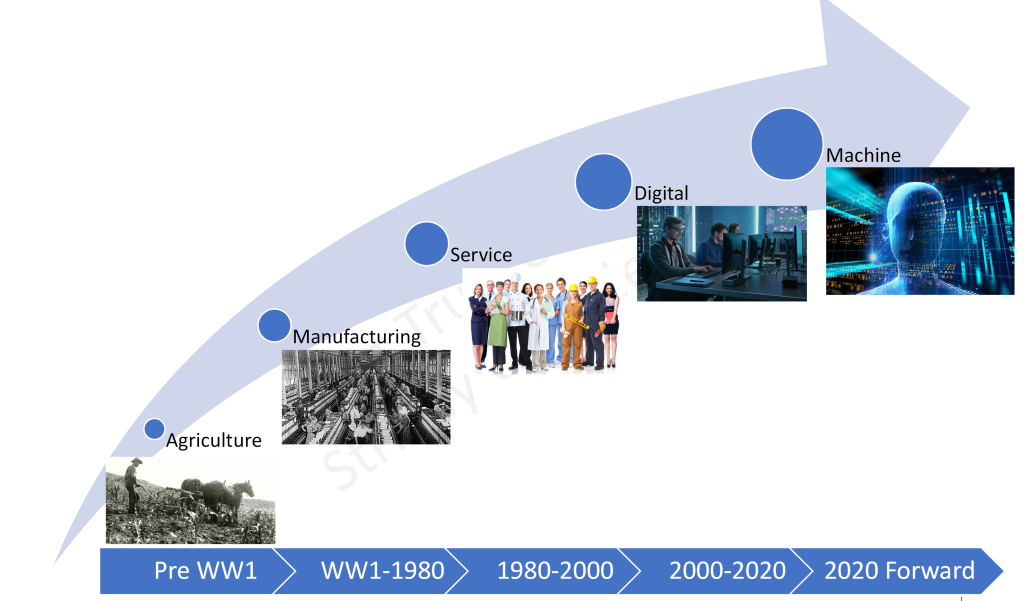Korea 2028, US 2030, has the next Summer Olympics site been announced? Actually, these are the expected dates for the rollout of 6G- the Olympics of wireless telecommunications!
Sixth-generation wireless, better known as 6G, is the successor to 5G mobile technology. While 6G is still in the research and development stage, experts are predicting wireless speeds up to 100x faster than 5G. The impact will be much more than just faster download speed. It will transform business and the way we interact with the world. 4G brought Uber and mobile gaming. 5G brought social media platforms like TikTok and enabled real-time streaming. 6G will unlock truly autonomous vehicles and augmented reality – where virtual reality seamlessly integrates with the real world.

Key Features of 6G
1. Higher Data Rates: Just as each generation of wireless technology has significantly increased data transmission speeds, 6G will continue this trend, possibly supporting speeds up to 100 times faster than 5G.
2. Lower Latency: Latency, or the time it takes for data to travel from one point to another, is expected to be drastically reduced with 6G, improving on 5G’s already low latency.
3. Advanced AI Integration: 6G could further the integration of artificial intelligence (AI) within the network infrastructure itself, leading to networks that can optimize their operations and security autonomously and in real time.
4. Expanded IoT Integration: The Internet of Things (IoT) will be an integral part of 6G, with more devices than ever being connected and communicating with each other. This will further enable smart cities, homes, and industries.
5. Extended Reality (XR) Support: 6G will support more advanced augmented, virtual, and mixed reality applications, providing richer and more immersive digital experiences.
6. Enhanced Connectivity: One of the main objectives of 6G will be to offer ubiquitous, ‘always-on’ connectivity, even in remote or traditionally underserved areas. This might be achieved through the use of new types of network infrastructure and higher frequency bands.
7. Reliability: 6G will provide consistent, reliable, and rapid, end-to-end data delivery, such as that needed to support the safe and efficient operation of driverless vehicles without concerns about potentially dangerous latency glitches, which is essential.
6G: The Nerve Center for the Next Economic Revolution
From a business standpoint, the 6G rollout will be providing the “lifeblood” of the fourth industrial revolution: The Machine-to-Machine Economy. The Machine-to-Machine Economy or “MTOM”, is one where the smart, autonomous, networked, and economically independent machines or devices act as the participants, carrying on the necessary activities of production, distribution, and allocation with little to no human intervention. Traditional industries will be transformed into technology industries.
High-speed wireless from 6G is essential for the machine MTOM economic transformation, much like the internet transformed the US economy into a digital economy. 6G acts as the nerve center for edge-centric technology. It binds terrestrial (cellular), spatial (satellite), air (UAV), and maritime communications into a single, highly dimensional ‘network of networks
The Fourth Economic Revolution: The Machine -to-Machine Economy

The US (and the rest of the world) needs this economic revolution. US debt now exceeds US GDP for the first time in history and that upside-down posture can lead to a death spiral for any economy. With a rapidly graying population and flat birth rate, we cannot just assume that we will outgrow these serious financial headwinds. We need the economic boost of machines doing human work.
The sixth-generation wireless technology (6G) could be 100 times faster than 5G, but the benefits reach far beyond speed. 6G will be a fully integrated system that allows instantaneous communications between devices, consumers, and the surrounding environment. Additionally, 6G-enabled enterprise technologies will transform the way companies process information, communicate, make decisions, and train employees. The new technology will drive innovative use cases and major social shifts. The high-level vision for 6G is to deepen the connection and integration between the digital, physical, and human worlds.
Merging the Virtual and Real Worlds
The impact of the seamless integration between the digital and real-world will transform how we interact with the world – like how cell phones and social media have transformed how we socially interact. The 6G future world is one where the digital and physical worlds, as we know them today, have merged. This merged reality of the future will provide new ways of meeting and interacting with other people, new possibilities to work from anywhere and new ways to experience faraway places and cultures.
This cyber-physical continuum is the key to 6G unleashing a new economy. A compelling white paper by Ericsson on 6G concludes that “soon, networks will be a critical component for the functioning of all parts of life, society, and industries, fulfilling the communication needs of humans and intelligent machines. As accelerating automatization and digitalization continue to simplify people’s lives, the emerging cyber-physical continuum will continuously improve efficiency and ensure the sustainable use of resources.”
How Will 6G Change Our World?
First off, 6G will turbocharge the metaverse. While the metaverse is quite the buzzword today, 5G cannot deliver the bandwidth needed for real-time, rendered, personalized 3D worlds. Fortunately, 6G will be able to deliver the speed and bandwidth necessary for the tech giants to create an immersive, persistent, fully-integrated virtual metaverse.
Additionally, 6G technology will lead to an even wider range of smart devices for personal and work use. There will be exponentially more devices connected to the internet that can collect and transmit data, which will ultimately lead to increased productivity in every phase of life.
6G will enhance the way we connect online. Instead of spending hours on 2D Zoom Calls or Team meetings, we will meet in 3D digital spaces, where our avatars will have “real” eye contact. We will be able to meet in groups and even express body language in real-time. If we need to hold a one-on-one meeting, we could simply switch all the participants out and find a quiet virtual space to connect. And if you want to visit a factory or try out a product, you could simply “fly” or “teleport” to a digital twin and experience it from there.
Another giant leap will be the ability to train the workers of the Future with VR and AR. With 6G technology, companies will provide immersive VR and AR training experiences that streamline the transfer of knowledge between teams and boost knowledge retention. Aerospace and engineering conglomerate Honeywell is already using AR and VR to improve its training efforts. The company equips new hires with mixed reality headsets and enables them to “see” the work other employees are doing. As the new hires mimic the tasks, the VR and AR technology overlays information that guides them as they learn.
The social media world will also be turned upside down. Instead of visiting someone’s 2D profile on a smartphone, with 6G connectivity, we will use mixed reality glasses to visit people’s 3D worlds, rendered in real-time.
6G will also revolutionize the world of health care. With lightning-fast data speeds, we can have smart sensors that float through our bloodstream and monitor and measure every aspect of our health. These connected devices will continuously collect data and analyze information to make recommendations and predict health issues before they arise. We will also see smart devices that can issue physical assistance and medications – supported by continuously updated digital representations of ourselves online. This has the ability to unleash an entirely new dimension for the healthcare industry, which is becoming one of the major growth areas of the global economy.
With these new advances, our healthcare industry will move from its reactive approach to a predictive, personalized model. This will revolutionize the way we take care of our health in the Future, and have a major impact on anyone who currently works in healthcare.
Another impacted industry will be defense, where speed of communication and connectivity drives all aspects of war, including the use of tech-enabled weaponry such as modern aircraft, drones, and robots. The ability to use 6G will also allow next-level simulation and planning and provide real-time insights to respond to challenges such as hypersonic missiles.
Innovators in 6G
In the US, there is a working group called “The Next G Alliance”. The group’s goal is to “advance North American mobile technology leadership in 6G and beyond over the next decade, while building on the long-term evolution of 5G.” The founding members include AT&T, Bell Canada, Ciena, Ericsson, Facebook, InterDigital, JMA Wireless, Microsoft, Nokia, Qualcomm, Samsung, Telus, Telnyx, T-Mobile, U.S. Cellular and Verizon.
Outside of the US, 6G leaders include Samsung, Ericsson, Nokia, NTT and LG. Ericsson has already started exploring manufacturing next-generation network infrastructure. NTT has started conducting technology trials with Nokia and Fujitsu. LG has opened a 6G research center, in collaboration with the Korea Advanced Institute of Science and Technology (KAIST).
Concluding Thoughts
6G is coming and will change the world. The impact will be so much more than faster download speeds. 6G will deepen the connection and integration between the digital, physical, and human worlds. It will change how we interact and how business is conducted.
